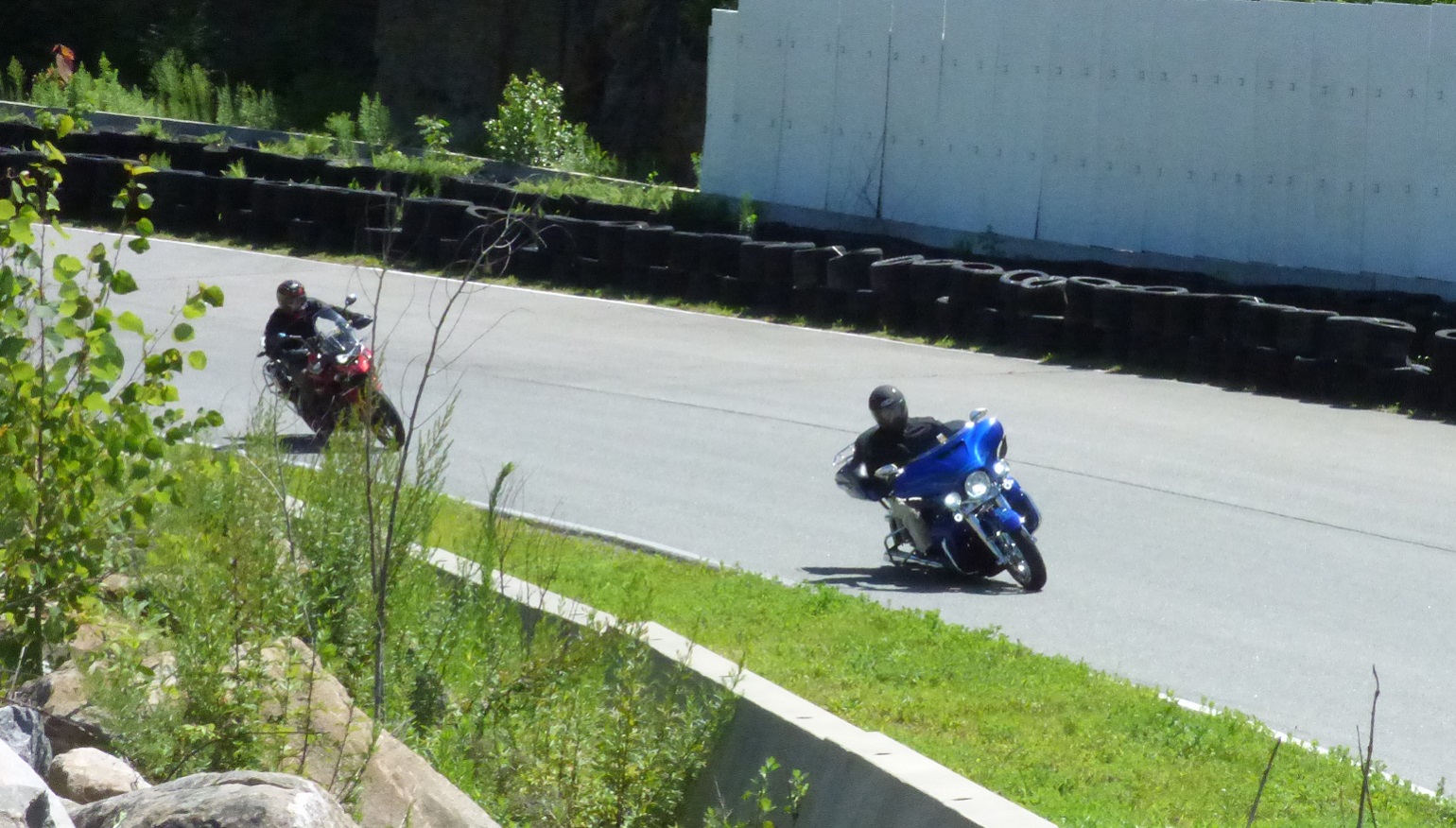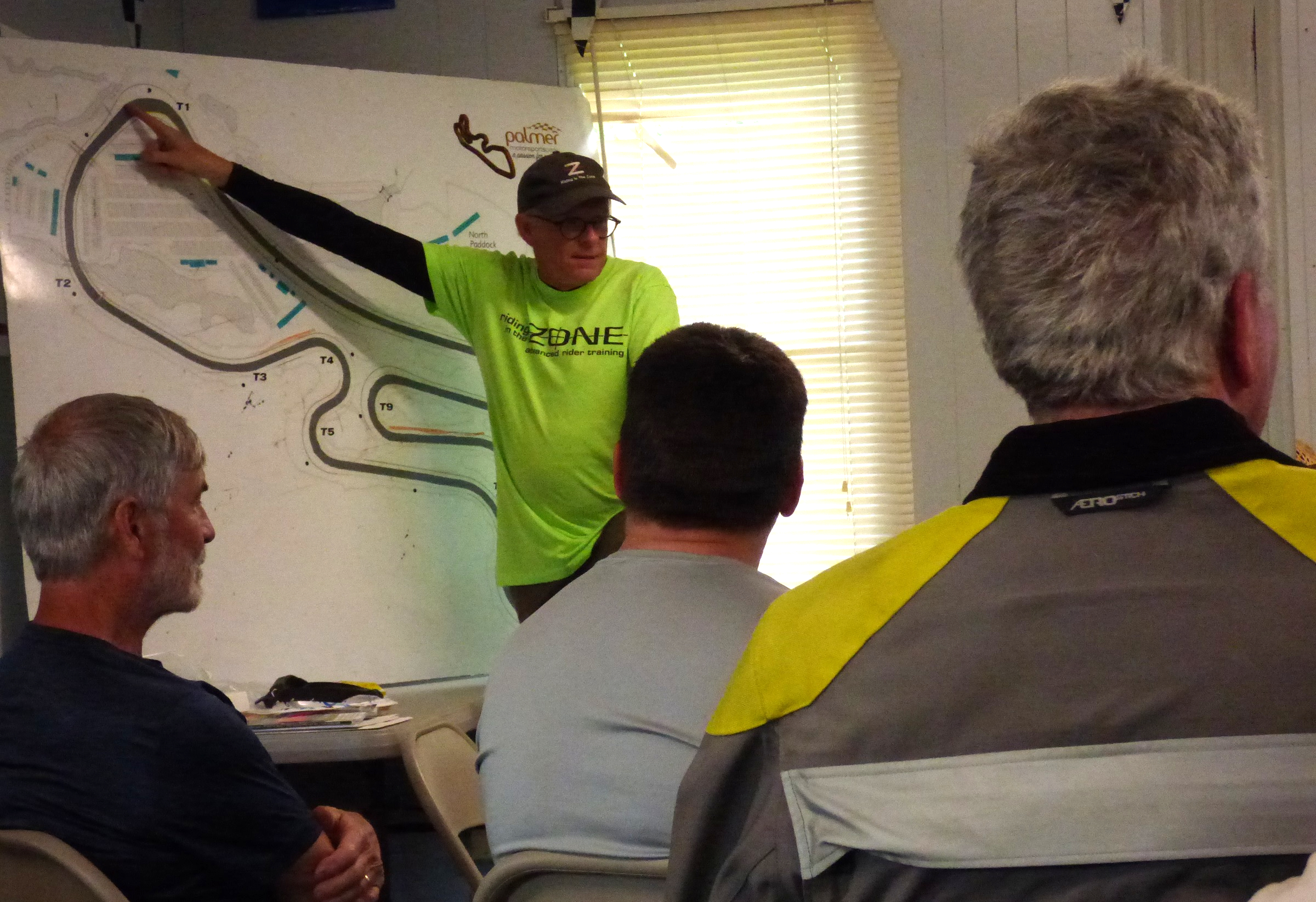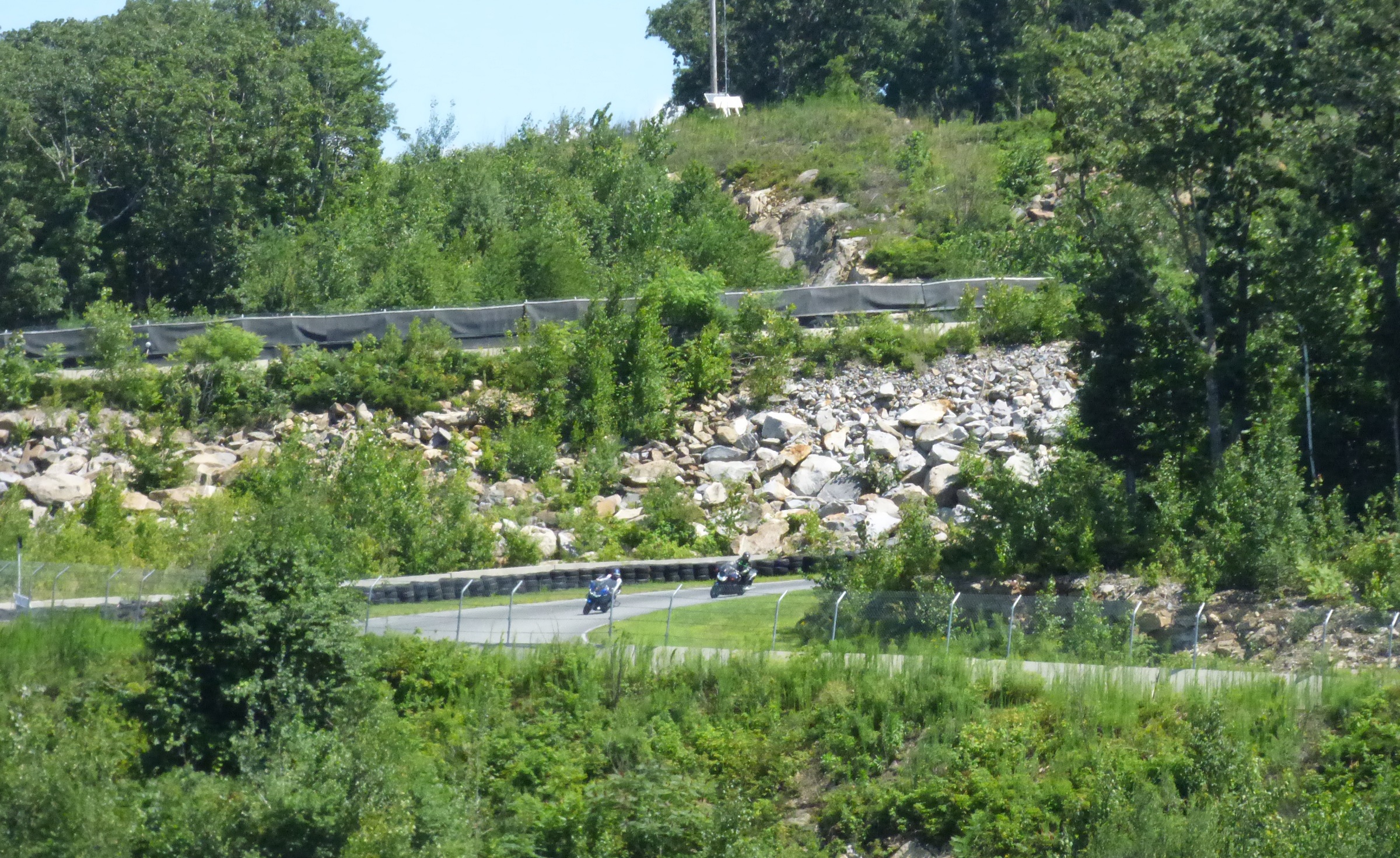How many people do you know who ride motorcycles? And how many do you know who have sought out any instruction to improve their riding skills after they got their motorcycle license? That latter number is probably a tiny fraction of the first one.
There are many obstacles that keep riders from seeking out professional coaching or training, despite that fact that riding a motorcycle is a complex physical and mental task and the costs of getting it wrong can be life-changing in their severity. I’ve taken several kinds of training courses over the years, both track-based and on-the-street training, but this summer I took a day-long training course that was specifically designed to break down the barriers, objections, and rationalizations that keep most riders from getting any kind of training beyond, if they’re lucky, that long-ago day when they wobbled around some cones in a parking lot in first gear in their Motorcycle Safety Foundation course.
I’m going to save for last the obstacle that I think is both the most common one and most difficult one to counteract when it comes to getting riders to take an instructional course. But first, let’s look at how the Advanced Street Rider Training Days course eliminates some of the other objections. The course was created six years ago by Ken Condon, who runs Riding in the Zone training courses and previously wrote riding skills columns for print magazines such as Motorcyclist and Motorcycle Consumer News. Originally called Non-Sportbike Track Day Training, the course has since been renamed to better describe the curriculum, which is about training riders to be better on the street, even though the instruction takes place on the track.
You see, many street riders’ bias against riding on the track is one of the big obstacles to getting instruction. Condon also does training courses in parking lots and on the street, but for teaching advanced skills, there’s no better place than a race track. Conditions are controlled and the same curves come up again and again every couple of minutes, so riders can focus on practicing technique, not on reading the road or watching for left-turning cars or worrying about gravel in the corner, and so on. But many riders instantly dismiss the idea.

Nobody will feel out of place because of the kind of motorcycle they’re riding. Everything from big touring bikes to adventure-tourers join in the mix at this track-day school.
“People heard ‘track day’ and all they thought of was ‘race track’ — which was the environment, but all they think of is the ‘race’ part of ‘race track’ and they’re on a Harley bagger. So they disassociate immediately, just by the name,” Condon said. That’s part of the reason for the name change to Advanced Street Rider Training Days.
While any training teaches basic techniques that will benefit all riders, track-based schools that focus on teaching the fast line around a race track are less relevant to someone who rides only on the street. And while even a typical track day often offers some opportunities for training from control riders or coaches, riders on a big touring bike, a cruiser, or an adventure bike, may feel like they don’t belong at a track day, where most people are riding a sport bike.
Condon’s Advanced Street Rider Training Days turns that upside down. They’re specifically for riders who aren’t riding sport bikes. Now I’ve seen some unexpected bikes at traditional track days, but when I went to the second training day of the year at Palmer Motorsports Park in central Massachusetts in August, I saw diversity of machinery you won’t see on a track anywhere else: cruisers such as a Harley-Davidson Softail Heritage Classic and an Indian Scout and even a lean-angle-limited BMW R 18, big touring rigs like a BMW K 1600 GTL, and adventure-touring bikes like a Honda Africa Twin. Personally, I was riding an Aprilia Tuareg 660 loaner bike I was testing for RevZilla. None of the riders would have any reason to look around and feel they didn’t belong because of the kind of motorcycle they were riding.
The course’s focus on skills that are applicable to street riding is another way to get past that common attitude of “I’m no racer, so why should I do a track day?” (See also: Ten reasons you need to do a track day.) With riders split into three groups, each hour consists of about 20 minutes of riding, 20 minutes of classroom time, and the remaining time to rest and rehydrate. The classroom sessions cover basic skills that would be taught in any kind of advanced training, such as looking farther ahead to give yourself more time to react and practicing smooth transitions between throttle and braking. Concepts such as trail braking are covered, and body position is discussed, but the approach is not to teach hanging off and dragging a knee like a roadracer, but shifting the upper body and turning your head to ensure you are looking through the turn.

Ken Condon explains one of the riding techniques taught at Advanced Street Rider Training Days. The focus is on skills that are applied to riding on the street, not just to make you a safer rider, but also to make riding more fun.
While a late apex may also be the fastest way around a track, the instructors use the track diagram to show how it also makes you safer on the street by maximizing your sight lines and setting you up to accelerate down the next straight stretch of road without aiming you toward the center yellow line, where a distracted driver could be drifting over into your space. The track is the setting, but street riding remains the focus.
“Our aim is to help you be better, safer, more skilled street riders,” Condon said during one classroom session.
Related to the bias against getting on the track is another obstacle: Riders who have never done a track day often have a warped idea of what’s involved, maybe imagining a wild free-for-all where everyone rides at the limit and anything goes. While that’s not true with any track day (a track-day organization that put on events like that wouldn’t survive long), it’s even less true at the Advanced Street Rider Training Days. Often, there is that one guy at a typical track day who lets his ego overwhelm his judgment and lead him into the gravel trap. I saw a conspicuous absence of that at the day I attended, and Condon was happy to report to me that at the two training days offered this year, not one rider went down. That says something about the organization and even more about the attitudes of the participants.
Even if non-sport-bike riders get past their bias against the track, another obstacle is expense, both of the course itself and related costs, such as gear. The cost of the one-day course is $350, including lunch, but you can reduce that by getting a rebate through the Paul B. Scholarship, which is administered by the BMW MOA. Members can get up to $250 back and non-members can get $100.
Another obstacle is gear. Many street riders are reluctant to spend on gear they expect to throw in the closet and never wear again for street riding. So while Advanced Street Rider Training requires full riding gear, participants don’t have to spend more than $1,000 on a leather suit. Riding jeans with armor are accepted, for example, as are modular helmets — two examples of gear that likely wouldn’t be allowed at a typical track day.
And then there’s what I think is the biggest obstacle of all, and the one that’s hardest to overcome.
If you think you don’t need training, that means you probably especially do
In my opinion, the biggest obstacle to experienced riders getting training is ego. Motorcyclists are overwhelmingly male and the average age of riders in the United States is somewhere north of 50. As a group, men in their 50s are frequently averse to admitting they don’t know everything they need to know. “I’ve been riding motorcycles for 20 years, so why do I need training?” is a common attitude. Condon is not alone when he points out that “Most people who have ridden 20 years have one year of experience repeated 20 times.” Or as world champion racer Kevin Schwantz used to say at his training course, “Practice doesn’t make perfect. Practice makes permanent.” If you practice bad habits, more years of experience won’t make you a better rider.

Palmer Motorsports Park in central Massachusetts provides some dramatic elevation changes and an interesting layout. The track was built with recreational track-day activities in mind, not professional racing.
The Advanced Street Rider Training Days accommodate up to 105 riders split into three groups and Condon only runs two days a year. That’s about all he can fill up, because too many riders still think they don’t need any instruction. And that’s also despite the fact that some people come back year after year and try to spread the word enthusiastically to other riders.
“I keep hearing from our customers how hard it is for them to convince their friends to do it, even though they’ve experienced it,” Condon said.
Here’s the thing. Whether we want to admit it or not, we all benefit from instruction. Even top professional racers use rider coaches, and none of us are better riders than they are. Even if you’ve taken training before, it’s helpful to have a practiced and knowledgeable set of eyes watching to make sure you’re really practicing the good habits you think you’re practicing.
“It’s not only about being safer,” Condon said. “The safety aspect is almost something I put second. The benefit is that it’s going to make your riding more enjoyable. You’ll have more confidence.”
Advanced Street Rider Training Days take place at Palmer, a 2.3-mile road course that loops over the top of Whiskey Hill Mountain and is the kind of place people go to turn laps in their Porsches for fun. The woodsy surroundings and dramatic elevation changes make it a fun and gorgeous setting for a day of track riding. If the location is accessible to you, I recommend it. If you haven’t taken any training before, you’ll learn techniques that will make you a more skilled rider. If you have taken training before, you’ll have experienced coaches watching and standing by to provide tips to make sure you’re really using the good habits you’ve tried to ingrain.
And if you’re one of those riders who thinks they don’t need any instruction because they’ve been riding for 20 years, then you probably need this course more than any of the rest of us.
